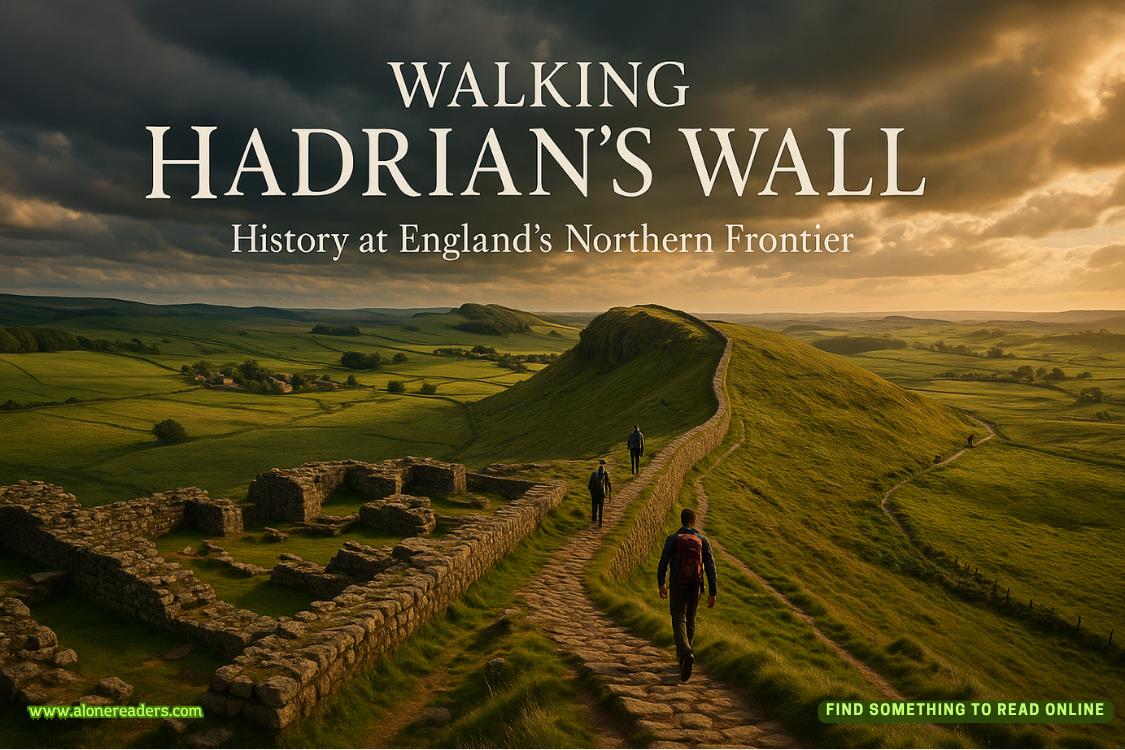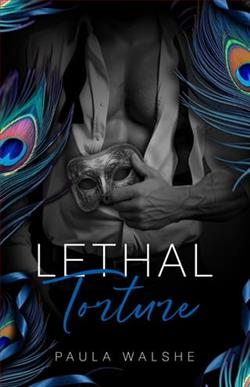Page 84 of Myths of Origin
That is what they do not understand, the boys who rush out wearing braggart swords on bonny hips, astride horses flashing flanks at the sun—only to hurry home as soon as the moon shows her calf. There is sanctity in simply placing one foot in front of the other, again and again, until the foot seems to remember no time when it sat still on a polished floor, and cannot recall what country birthed it—toe, heel, or arch. Devotion to the wood and the wild is a thing of beauty, devotion to the walking staff and the manzanita-bramble, devotion to the beast which may or may not breathe fire, which may or may not possess the ability to fly, which may or may not dream of its eggs, of the shell’s slippery hues, ultramarine to indigo, splintering with the pressure of a tiny speckled beak.
In the Sierras, there are places men have never trampled a leaf underfoot. This is, after all, the othered space of fairyland, and if I am to take my chances anywhere, if I am to hope for a green leg, a variegated tail, a clutch of painted eggs, it can be nowhere else but here. I make my little fire in the shade of granite, on the moraine where a glacier once ground its ponderous, imperturbable way through, dropping boulders like shameful tears behind it. Kitchen smells urge their oily gleam through the oaky air—the tea sour and thin, bacon popping and slapping in its grease, leaving a tiny constellation of fat-burns on my forearm, a Pleiades of lard and scorched hair—the sound of it like a spill of salt onto a slick white floor. Coffee speaks its bean-tongue, and the mountains grumble a loamy rhythm of longevity.
The sextant gleams hopefully.
In the center of the head of many lizards is a small semi-transparent spot, which connects to an area of the brain, called the pineal body. A pineal body is a small, cone-shaped projection from the top of the midbrain of most vertebrate species. The pineal body does not appear in crocodiles or in mammals of the order Xenarthra, consisting of only a few cells even in whales and elephants. In lizards, this is a kind of “third eye,” thought to detect day length via the angles of sunlight, triggering the breeding instinct in midsummer, and hibernation in winter. It may also allow certain species of green and red lizards to detect the presence of others of their kind, suitable mat
es or rivals. It has been suggested that the pineal body would account for the reports of dragons able to eerily pinpoint the weakest part of siege-towers and other man-made defenses.
Pellinore is a new name. Once, it was Beli Mawr, once Bile and Bel. When the Beast had not yet taught our family to disregard the year’s hemlines we came when we were called, and on boulder-strewn fields we thrust our fists against the mud. We kept death in the grasses, and when we opened our mouths, our daughter roared into birth from our jaws. We were moss-bearded giants, beasts ourselves, and our knees were large as shields. Over time, we shrunk into the usual span of height, and began to hunt others, instead of fleeing from earnest young men with nets and tridents.
We became domesticated—it can happen to anyone.
The muscles in our hawthorne-thighs ached with the strain of holding the down the dark. Stone huts and beds of barley-hulls began to seem sweet as mountains to us, and we lay down into the sleepiness of country lordships.
But we still resemble boulders enfleshed—occasionally I will find a bit of lichen or milkweed growing in my beard—our skin is famously tough, elephant-coarse and the deep brown of men accustomed to carrying the sun on their shoulders. Roofs do not become us. But I took a roof onto my back, didn’t I? Didn’t I agree to put my shoulders to the beams of Camelot, didn’t I let them settle the rafters onto my neck like the fasteners of a guillotine?
I suppose I did, and yet now it seems as though another man asked to be seated at that table, where no Beast would ever rest its beryl hindquarters. Someone young and blonde with knuckles like fat golden rings—yet I know my beard is red. What color could it be but red? My face sprouts fire as the Beast’s does. We are brothers, sinewy and smoldering old goats trundling about on a mountain neither of us can name. Who was it that clapped Arthur on the back and ate roasted rooster’s combs? I suppose it was me. I am a Pellinore, the only one living. So, logically, it must have been me.
Perhaps I only wish it were another man, so that I would not now be this old walnut-husk, so that I would not have walled myself away from the Beast and the storm-sky’s clamor for all those years. Perhaps I once had yellow hair, and I have forgotten it.
I never told Arthur whether I am older or younger than he—at times I played the lad, at times I stood for the Merlin-that-was, the Merlin-before-Nimue, and put my hand on his shoulder—though it is not the owl-clutch he remembers, my hand is much too heavy for that. But it held the old man’s place for awhile.
Do you remember, Arthur, the night you, too, dreamed of the Beast? How you said it had a pelt like a leopard—patently ridiculous, of course—and the feet of a deer—absurd!—the haunches of a lion to top it off—of all the preposterous theories! And you clutched me, sweating, clammy, and whispered that a brother had got a child on his sister, and that child was the Beast, and the brother was punished, punished, in your dream he was punished and the Beast ate him whole.
Oh, my boy. You come to your Pellinore and tell him to wear the band of a dream-interpreter, and I know you are sorry, I know you wish it had not happened, but you needn’t tell stories about Beast to torture yourself. He is beyond such silliness. And I told you not to fear—I had hunted him for years and would take it up again for you, and I would ask him myself if all children of a brother and a sister were wicked. As if the Beast knows a thing about it, but it seemed to calm you, and that one night, you feel asleep in my arms, like a son.
I cannot go back now—too many graves, fanning out like sunflowers around its grounds, too many wraiths in the halls, spaces whose edges still burn like cigarette-scars, spaces where people we loved used to walk, and gossip, and trade their cinnamon for lumps of brown sugar. All the men of that place are professional pallbearers now. That great, gabled hall is a death-barrow. It is a mausoleum, tightly shut, scented with bergamot and myrrh. Nothing can live closed inside.
The Beast, oh, my Beast is life. The dragon, its skin hot as a baking stone, its tender snout nosing the air, the space where its skull-plates meet pulsing in an almost intimate rhythm, so that you almost feel ashamed to witness so private a flutter. Nothing about the creature admits the existence of cold—the pouched flaps which might be wings chuff a sirocco off of its aerie, a rush of brown and ochre nest-shreddings. And I, in my lowland hutch, speculating to an audience of three dim stars and a titmouse as to whether the Beast might have some kind of fur over its spine, as smaller lizards are reported to have, fat tufts of hoary tangles—and how would this affect any latent or actual flight abilities?
But the castle beyond the foothills spattered with blackthorn and honey-hearted oak, the castle where the lights have gone out in the tall windows? That is a dead place, and I would never have found the Beast if I had stayed to die with it.
. . . most lizards and many other species of reptile have the ability to rejuvenate their tails. The bright coloration of the tail, ranging from vermillion to emerald and into various shades of gold, in some species diverts the attention of predators to the expendable appendage, aiding in escape. (Image ?)
Fracture points on the tail bone allow the tail to easily break away. In some lizard varieties, (Image Y), the tail can regenerate itself many times over after detachment, often in entirely different patterns of color than the original tail.
Beast, Beast, when you leave me, I am alone.
When I forget its color—I am almost certain it is green—when I forget that the lining of its nasal passage is coated in opaque mucus which protects the tender tissues from any stray spires of baroque flame, I wake up in the night, shivering, sweating, groping for my notes.
I think, when I was at Arthur’s candled hearth, I did not sleep at all. The mornings were all pale as the thronging winter and twice as polluted, scarred like a map, and beyond that line there were monsters, terra incognita, alien shores of bleached dinosaur bones, lizards like gods, and I sitting lotus-full in their center, thick as meat. And I was not off the map, I was choked with parchment, when I should have been where I belonged—with the monsters and the deep, outside the grip of longitude.
But Arthur was a beast himself in those days—the tawny bear-king slapping lazily at bees with a massive paw. I contented myself with measuring his stride and analyzing the musculature of his broad back—I told myself that was enough, to watch the lion lying on his stone slab, and his mate languid in the shadows. I told myself that there were no dragons, or if there had once been, they were long extinct, long extinguished, dead as diamonds.
But at night, I would wake and my lungs would seize, I would scramble for my cliometer and hold it to my heaving chest. I would calculate the Beast’s probable heart rate, its respiration, its molting-day three years hence, until I was calm again. As time went by, more and more recitations were necessary to calm the panic burbling up in me like cauldron-brew. I was not Merlin, I could not be the old man of the law-bench and banquet-hall—I could only be the old man of the mountain, and that only by the grace of the Beast.
I longed for the mountains, the mountains which hunch and huddle like my own body, clutches of wild ponderosa and star thistle grinning in the knee-joints and elbow-sockets. I longed to sniff the baroque, three-pointed footprint of the Beast, to measure it precisely and note the length of the talons in my notebook. I longed to smell a fire gobbling up the green branches, I longed to sleep on hard ground and wake to the sound of a tail whisking by, just a little further on, always a little further on.
I didn’t even have to creep, or muffle my footsteps. By the time I heard the great gate swing closed behind me, there was no one left to care that I had gone.
The scales of certain lizards are shaped like small beads. Only the beaded varieties are venomous; therefore, if one can get close enough to a specimen or obtain a corpse for study, this can be useful in taxonomy. Of course, dragons have no need of venom, being capable of generating streams of multicolored fire from glands corresponding approximately to lymph nodes in humans. My opponents maintain that there is a relationship between reports of fire and reports of venom—that the two have somehow become confused in folklore, and that the image of the great-winged, fire-breathing dragon so popular in the peasant psyche is, in fact, a small, bead-scaled creature no more than three feet in length capable of producing a venom which may or may not paralyze small vermin such as mice and voles.
It is always dangerous to leave the mountains.
If one leaves them for Camelot, one may at least be sure that one travels form linear space to linear space, that molecules and sky-motes will behave approximately as they do elsewhere.
Any other destination is suspect.















